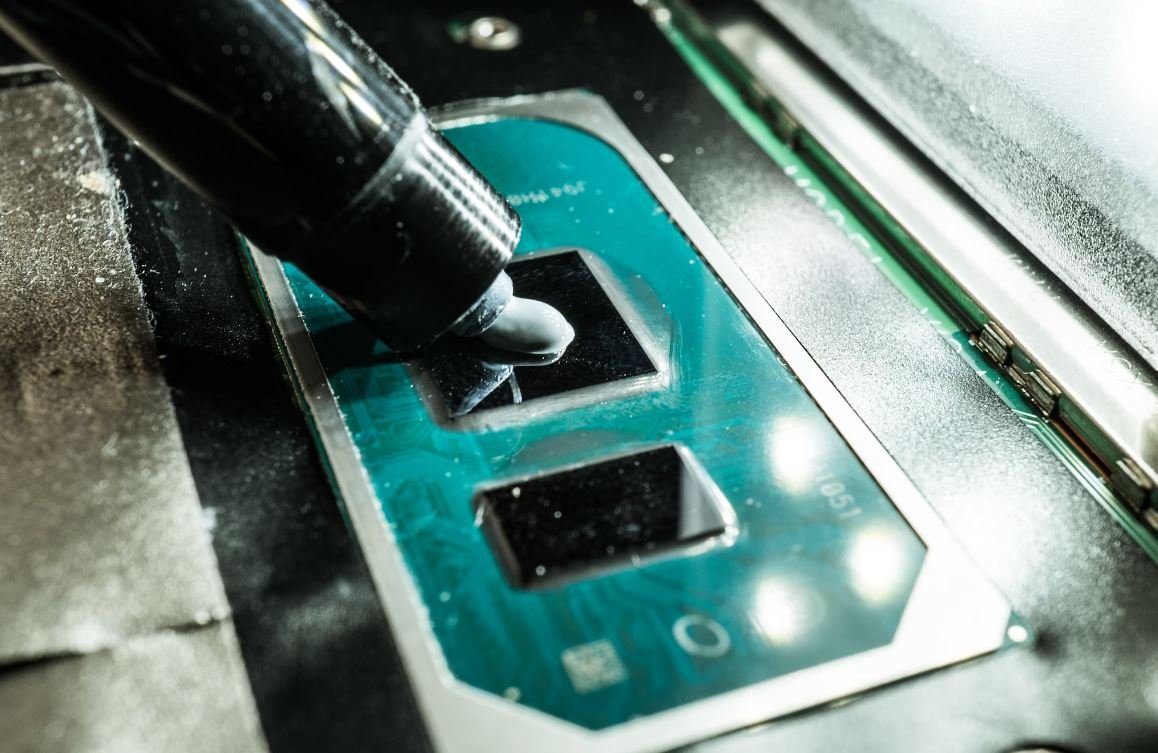Introduction to AI and Production Systems
Artificial intelligence (AI) is revolutionizing various industries by enabling machines to perform tasks that traditionally require human intelligence. One application of AI is in production systems, where it enhances operational efficiency, improves productivity, and streamlines processes. In this article, we will explore the fundamentals of AI and its integration into production systems.
Key Takeaways:
- AI enables machines to perform tasks that traditionally require human intelligence.
- Production systems benefit from AI by improving efficiency and streamlining processes.
- AI integration in production systems enhances productivity and decision-making.
What is AI?
**Artificial intelligence (AI)** refers to the simulation of human intelligence in machines that are programmed to think and learn like humans. It involves the development of computer systems capable of performing tasks that typically require human intelligence, such as visual perception, speech recognition, decision-making, and problem-solving. AI utilizes various techniques, including machine learning, natural language processing, and computer vision.
*Machine learning*, a subset of AI, is the process of training algorithms to learn from data and make predictions or take actions without explicit instructions. This ability to learn and adapt is what sets AI apart from traditional computer programming.
A Brief Overview of Production Systems
Production systems encompass all the activities involved in manufacturing and delivering products or services. A well-designed production system efficiently converts inputs, such as raw materials, into finished goods or services. These systems consist of multiple interconnected elements, including people, machines, materials, information, and processes.
*An interesting aspect of production systems* is the need to optimize resource allocation and enhance productivity while maintaining high-quality standards.
AI Integration in Production Systems
The integration of AI in production systems brings numerous benefits to organizations. By leveraging AI technologies, production systems can become more efficient, adaptive, and autonomous.
Some of the benefits of AI integration in production systems include:
- Improved efficiency through automated processes and reduced production cycle time.
- Enhanced productivity by augmenting human capabilities and optimizing resource allocation.
- Real-time data analysis for effective decision-making and predictive maintenance.
- Optimized inventory management and supply chain operations.
*An interesting fact: AI-powered robots in production systems have shown an average productivity increase of 30%.*
Examples of AI in Production Systems
AI has found applications in various areas within production systems, revolutionizing the way organizations operate. Here are a few notable examples:
- **Predictive quality control**: AI can analyze vast amounts of data to identify patterns and predict defects, enabling proactive quality control.
- **Smart maintenance**: AI-enabled systems can monitor equipment health, predict failures, and schedule maintenance to minimize downtime.
- **Logistics optimization**: AI algorithms can optimize route planning, warehouse management, and transportation to streamline supply chain operations.
AI Challenges in Production Systems
While AI brings significant benefits to production systems, there are challenges that organizations need to address for successful integration and operation of AI technologies.
Some of the key challenges include:
- Availability and quality of data for training AI models.
- Integration of AI systems into existing infrastructure and processes.
- Ensuring data security and privacy in AI-powered systems.
- Addressing ethical considerations and potential biases in AI decision-making.
Conclusion
AI integration in production systems is transforming industries by enhancing efficiency, productivity, and decision-making capabilities. By leveraging AI technologies, organizations can streamline processes, optimize resource allocation, and achieve better overall performance. It is crucial for organizations to address the challenges associated with AI adoption and continually improve their production systems to stay competitive in the rapidly evolving landscape.

Introduction to AI and Production Systems
Common Misconceptions
There are several common misconceptions that people often have about AI and production systems. These misconceptions can contribute to misunderstandings and false expectations. It’s important to clarify these misconceptions to have a more accurate understanding of the topic:
- AI is all about robots: One common misconception is that AI is solely related to robots. While robots may be one application of AI, AI is a much broader field that encompasses the development of intelligent systems and software that can perform tasks that would typically require human intelligence.
- AI will replace humans in the workforce: Another misconception is that AI will completely replace human workers. While AI can automate certain repetitive tasks, it is more commonly used to enhance and augment human capabilities in various industries. AI systems work alongside humans to improve efficiency and decision-making.
- All AI systems are self-aware and possess human-level intelligence: Many people believe that AI systems possess human-level intelligence or are self-aware. However, most AI systems are designed to perform specific tasks and do not possess general or human-like intelligence. AI systems are limited to the tasks they are trained or programmed for.
It is crucial to dispel these misconceptions and have a realistic understanding of AI and production systems. Let’s address a few more misconceptions:
- AI is infallible and always makes the right decisions: Although AI systems can be highly accurate and efficient, they are not infallible. AI relies on the data it is trained on, and if the training data is biased or incomplete, the system may make incorrect decisions. It is important to continuously monitor and evaluate AI systems to ensure their performance.
- AI will solve all our problems: While AI has the potential to address many challenges, it is not a magic solution that can solve all problems. AI is a tool that requires careful design, implementation, and monitoring. It is essential to understand its capabilities and limitations to use it effectively.
- AI is a recent phenomenon: Contrary to popular belief, AI is not a new concept. Although advancements in computing power and data have accelerated progress in AI, the field has been around since the 1950s. AI has undergone significant development over the years, but it is not a brand-new technology.

AI Applications in Various Industries
Artificial intelligence is revolutionizing various industries by automating processes and improving decision-making. The table below highlights examples of AI applications across different sectors.
| Industry | AI Application |
|---|---|
| Healthcare | Medical image analysis for diagnostics |
| Finance | Fraud detection and risk assessment |
| Transportation | Autonomous vehicles and route optimization |
| Retail | Personalized product recommendations |
| Manufacturing | Predictive maintenance and defect detection |
Natural Language Processing and AI Assistants
Natural Language Processing (NLP) is a field of AI that focuses on the interaction between humans and computers via natural language. AI assistants are a practical application of NLP, as shown in the table below.
| AI Assistant | Functions |
|---|---|
| Siri | Voice commands, device control, reminders |
| Alexa | Smart home integration, weather updates, music streaming |
| Google Assistant | Web searches, scheduling, navigation |
| Cortana | Email management, calendar organization, virtual meetings |
AI in Entertainment and Gaming
The entertainment industry has embraced AI and incorporated it into various aspects, such as video games and content creation, as shown in the table below.
| Application | AI Use |
|---|---|
| Character animation | Motion prediction and realistic movements |
| Content recommendation | Personalized movie and music suggestions |
| Gameplay optimization | Adaptive difficulty levels and AI opponents |
| Scriptwriting assistance | Automatic dialogue generation and plot suggestions |
AI Ethics and Bias
AI technology raises important ethical and bias concerns that require careful consideration. The table below highlights key aspects of this ongoing debate.
| Ethical Concerns | Bias Concerns |
|---|---|
| Job displacement | Unequal representation in training data |
| Privacy and data security | Discrimination in decision-making algorithms |
| Autonomous weaponry | Gender and racial bias in facial recognition |
| AI transparency and accountability | Prejudice reinforcement through social media algorithms |
AI in Education
Artificial intelligence is transforming the educational landscape by providing personalized learning experiences and optimizing administrative tasks. The table below showcases AI applications in education.
| Application | AI Use |
|---|---|
| Intelligent tutoring systems | Adaptive learning, personalized feedback |
| Automated grading | Efficient evaluation and feedback generation |
| Virtual reality in classrooms | Immersive simulations and experiential learning |
| Smart content recommendation | Course suggestions based on preferences and performance |
AI and Cybersecurity
Artificial intelligence plays a crucial role in enhancing cybersecurity measures to counteract sophisticated threats. The following table presents examples of AI applications in cybersecurity.
| AI Application | Function |
|---|---|
| Malware detection | Identifying and mitigating malicious software |
| Anomaly detection | Monitoring network traffic for unusual behavior |
| Behavioral analytics | Identifying patterns of suspicious activities |
| Automated threat response | Generating real-time countermeasures against cyber attacks |
AI in Agriculture
AI is revolutionizing the agricultural sector by improving crop management, optimizing resource utilization, and enhancing livestock farming. The table below showcases AI applications in agriculture.
| AI Application | Function |
|---|---|
| Precision farming | Optimizing crop yields and resource allocation |
| Animal health monitoring | Early detection of diseases and behavior analysis |
| Automated harvesting | Efficient and timely crop collection |
| Weather prediction | Accurate forecasting for optimal farm management |
AI in Environmental Protection
Artificial intelligence is aligned with environmental protection efforts by enabling more effective monitoring and conservation practices. The table below showcases AI applications in this important domain.
| Application | AI Use |
|---|---|
| Wildlife monitoring | Identification and tracking of endangered species |
| Climate modeling | Prediction of weather patterns and climate change impacts |
| Sustainable energy management | Optimizing renewable energy production and consumption |
| Pollution control | Real-time monitoring and analysis of air/water quality |
AI and Human Resources
Artificial intelligence is transforming HR processes, aiding in talent acquisition, and optimizing employee management. The table below showcases AI applications in HR.
| AI Application | Function |
|---|---|
| Resume screening | Automated analysis and candidate shortlisting |
| Employee engagement | Predicting job satisfaction and addressing concerns |
| Attendance and performance tracking | Efficient monitoring and evaluation of employees |
| Training recommendations | Identifying skill gaps and suggesting training programs |
In conclusion, the integration of artificial intelligence and production systems is driving significant advancements in various fields. AI is enabling automation, optimization, and personalized experiences across industries such as healthcare, entertainment, education, and more. While there are ethical considerations and potential biases associated with AI, its potential to transform multiple sectors is undeniable. As technology continues to evolve, AI will continue to play a pivotal role in shaping the future.
Introduction to AI and Production Systems
FAQs
What is artificial intelligence (AI)?
Artificial intelligence (AI) refers to the simulation of human intelligence in machines that are programmed to think and learn like humans. It involves various subfields such as machine learning, natural language processing, and computer vision.
What are production systems in AI?
Production systems in AI are rule-based systems that use a set of predefined rules called production rules to solve problems or make decisions. They consist of a collection of rules and a working memory where the system matches the current state to the relevant rules and performs actions accordingly.
How do production systems work?
Production systems work by maintaining a working memory of facts or data. When a new input or information is received, the system matches the current state with the production rules to find the rules that are applicable. The system then executes the actions associated with those rules, potentially modifying the state and producing new knowledge.
What are the advantages of using production systems in AI?
Some advantages of using production systems in AI include their modularity, transparency, and ability to handle large amounts of knowledge. Production systems offer a structured approach to problem-solving, making it easier to modify and update the system’s rules as needed.
What are the limitations of production systems in AI?
Production systems can sometimes be computationally expensive, especially with complex rule sets. They may also face challenges in handling uncertainty and real-time data. Additionally, the performance of production systems heavily relies on the quality and accuracy of the rules and the knowledge base.
How does machine learning relate to production systems?
Machine learning can be used in conjunction with production systems. While production systems rely on predefined rules, machine learning can help in generating or modifying these rules based on training data. It enhances the system’s ability to adapt and learn from new information.
What are some real-world applications of production systems in AI?
Production systems find applications in various domains, such as healthcare (diagnosis and treatment planning), finance (fraud detection), manufacturing (quality control), and customer support (automated response systems). They are also used in expert systems and decision support systems.
Are there any ethical concerns associated with AI and production systems?
Yes, there are ethical concerns associated with AI and production systems. Some concerns include biases in the training data, potential job displacement, and privacy issues. It is important to develop and deploy AI systems responsibly, considering the social and ethical implications.
What is the future of AI and production systems?
The future of AI and production systems is promising. Advancements in technologies like deep learning, reinforcement learning, and cognitive computing continue to push the boundaries of AI. Production systems will likely become more intelligent, adaptive, and integrated with other AI techniques to solve complex problems in various domains.
How can I learn more about AI and production systems?
There are numerous online courses, tutorials, and books available to learn about AI and production systems. You can explore introductory courses on AI, machine learning, and expert systems. Additionally, academic research papers and conferences provide insights into the latest developments in the field.




